Nasim Alikhani's Nowruz Celebration Is a Spring Feast of Renewal
The chef celebrates Persian New Year with the traditional menu, a modern cocktail, and a dessert influenced by her travels through Greece.
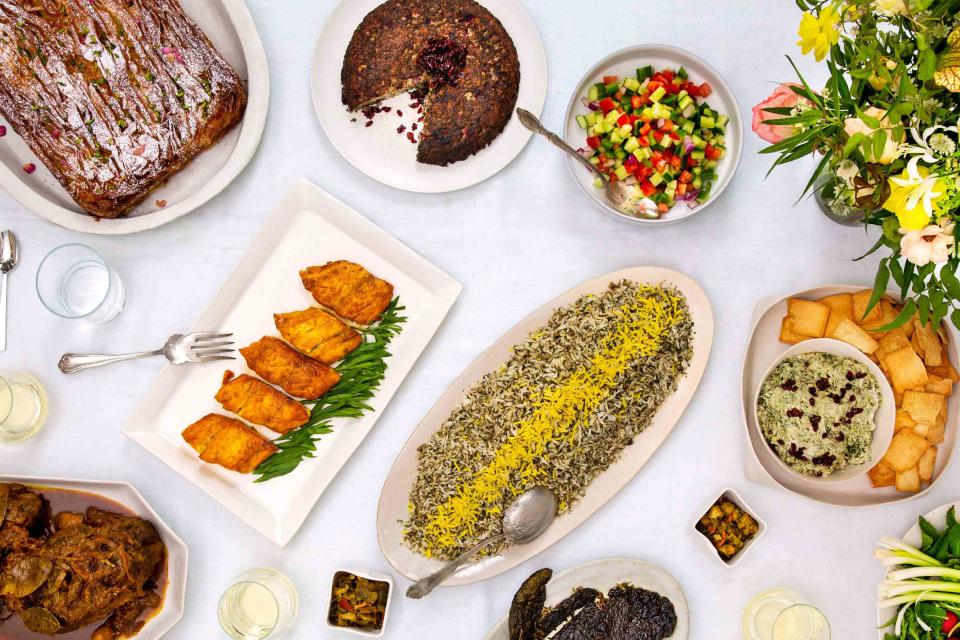
Ellen Silverman
For Nasim Alikhani, there is a certain rhythm and flow, a crescendo building up to Nowruz. The Persian New Year, an ancient celebration marking the arrival of spring and symbolizing renewal, demands it. There is a house to be cleaned; batches of tiny cookies (almond marzipan, rice, chickpea) to be baked; new clothes and shoes to be freed from their tags and proudly worn; and the haft-seen — an array of auspicious items including wheatgrass for rebirth and goldfish for prosperity — to be set on a table or on a cloth known as sofreh. All this is just a small slice of what happens in preparation for the big event: a meal where family and friends gather at one’s home and feast together over a time-honored menu of whole fish; sabzi polo, an herb-laden rice; and kuku sabzi, a verdant frittata.
For Alikhani, celebrating the Persian New Year has always been steeped in tradition, whether she was at her family’s table in Iran, digging into dishes made by her mother, or in her New York apartment with her husband, kids, and anywhere from 10 to 45 friends packed in to share the feast.

Ellen Silverman
In 2018, after Alikhani opened Sofreh, a contemporary Persian restaurant in Brooklyn, she shifted her Nowruz celebration there. She starts baking those tiny cookies a month in advance — nearly 2,000 for the 500 or so diners who come through her doors for the Nowruz prix fixe menu — and brings the colorful, patterned, or sheer metallic-threaded sofreh she has been using at home to furnish the space. Last year, Alikhani invited musicians to march through the restaurant with drums.
Related: 33 Middle Eastern Recipes Featuring Feta, Phyllo, and Fragrant Spices
“If you have a Persian restaurant with Persian music and Persian food, how could you not do Persian New Year?” Alikhani asks. “It’s the only thing truly Persian to me, an occasion to celebrate who we are as a nation. That’s why I make a big deal of it at the restaurant, with a special menu and decorations. I’m there from 7 a.m. to closing time, giving it my all. I want other people to see our culture, see what we do, and celebrate with us.”
This desire to share Persian cuisine and culture is what led Alikhani into the restaurant business. She moved to the U.S. initially to study sociology (followed by a master’s degree in international affairs) and ended up in the printing business with her husband. With each ebb and flow, cooking grounded her. “It’s the thing that keeps my mind and heart quiet and connected,” she says.
But as she settled into her new home in New York City, she noticed something. “My husband and I would go out to the best restaurants, and I was left with these questions: Why isn’t Persian food in the scene? Or why is it only kebab and rice spots, but in our homes we have an incredible tradition of food? What’s wrong with this picture?” Alikhani remembers. “I kept spoiling my husband’s dinner.”
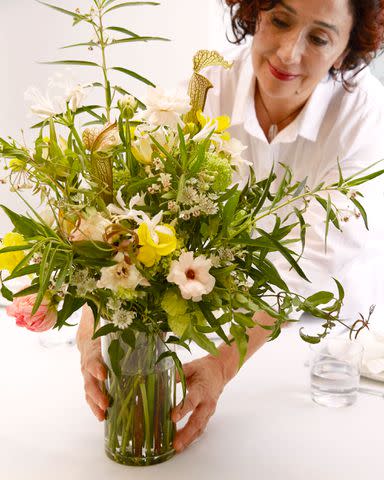
Ellen Silverman
She decided to open her own restaurant, a Persian café, but that plan was put on hold once she found out she was pregnant with twins. Alikhani focused on her family and found other ways to keep her dream alive. She catered for nonprofits and friends’ weddings, went to culinary school, and moonlighted at Persian restaurants in the city, churning out ash reshteh, the herby noodle stew, that outsold the kebabs. “I nurtured this whole thing for 25 years in my heart,” she says.
Related: This Iranian Supermarket Gives Me a Taste of Home
At age 59 — and once her kids were off to college — Alikhani finally had the time and space to invite others to experience the Persian food that sustained and inspired her through the opening of Sofreh. And people came. Sofreh became an instant hit in Brooklyn, earning accolades from prominent food publications, and Alikhani has gone on to write her own cookbook with Theresa Gambacorta, Sofreh. All of this is the fruit, glorious and juicy, of not only her labor but also her unwavering patience and determination.
“There was never a moment of doubt. I have faced rejection, failure, heartbreak. I have lived a life. I could see opening a restaurant and it being a total disaster, but I can handle it. What I can’t handle is being 70 and wishing I did that,” she says. “That I cannot handle.”
This Nowruz menu reflects her singular vision and creative spunk on display at Sofreh and nurtured for years in her home kitchen. Alikhani throws crunchy walnuts into her kuku sabzi, sprinkles sun-dried lime juice over her pan-seared fish, and slips kale into her sabzi polo. She whips up gimlets muddled with tarragon and scented with rosewater and gives the custardy bougatsa she picked up while traveling in Greece (her husband is Greek) a Persian flair with a touch of saffron. This is Nowruz in Alikhani’s house, now for all to enjoy.
“I wanted to do what I love the most and that is cooking, and cooking Persian food is what I know the most,” Alikhani says as she reflects. “As soon as I started talking about the details of the restaurant — the design, the music, the dishes, the calligraphy — I was like, ‘Wow, I’m doing a lot of cultural stuff.’ Slowly, I realized I was doing something essential for our culture."
Bougatsa
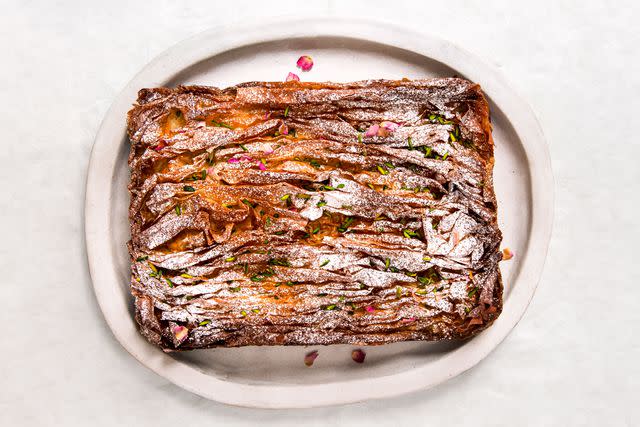
Ellen Silverman
Made of layers of flaky phyllo and creamy custard, bougatsa is a traditional Greek pastry that Alikhani learned about from her Greek in-laws. It’s typically flavored with cinnamon, but Alikhani’s version includes floral notes from saffron and rosewater in the custard and sweet cardamom and salted pistachio crunch on top.
Mahi Zafaroni (Pan-Seared Fish with Saffron and Dried Lime)

Ellen Silverman
Saffron gives this fish a golden color and sweet floral flavor, while dried limes, a popular Persian souring ingredient, add a slight kick of citrus along with earthy, fermented flavor. If needed, an equal amount of freshly squeezed lime juice can be used in place of the dried lime juice.
Nowruz Sabzi Polo (Herbed Rice)
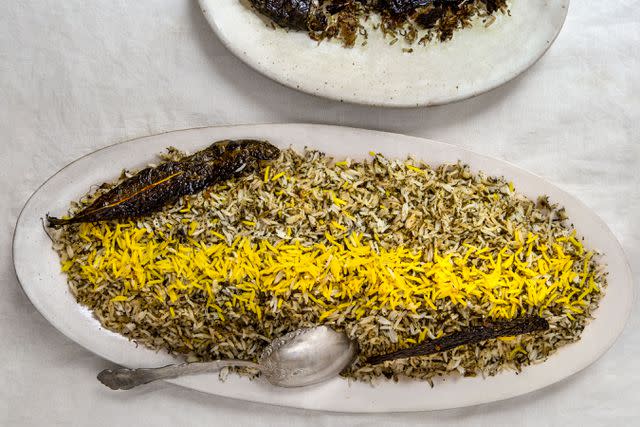
Ellen Silverman
This aromatic rice is full of fresh herbs that symbolize spring, which is why it’s traditionally enjoyed during Nowruz, the Persian New Year beginning on the spring equinox. Growing up in the landlocked province of Isfahan in Iran, Alikhani and her family would eat sabzi polo alongside salted and smoked Caspian mahi sefid (whitefish) — the only fish available back then — with plenty of lime.
Khorak Ghosht-e Bareh (Slow-Braised Lamb)
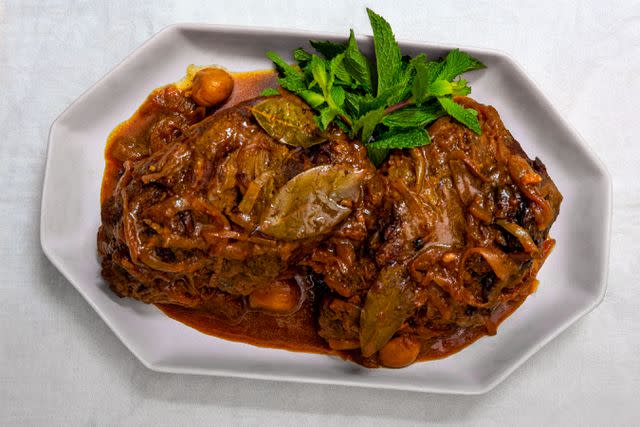
Ellen Silverman
While Alikhani prefers bone-in lamb shoulder for the ultimate presentation of this recipe, we’ve adapted our version for home cooks using more readily available boneless leg of lamb without sacrificing any of the flavor. Low and slow are the keys to this aromatic, tender braise made fragrant by warm spices and a braising liquid fortified with rich stock and lamb juices. This dish tastes great fresh from the oven and even better the next day, making it the perfect main dish for celebrations and gatherings.
Kuku Sabzi (Herb Frittata) with Kale and Cranberry
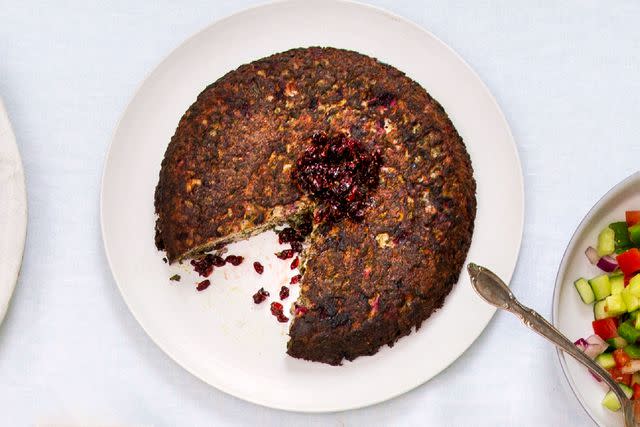
Ellen Silverman
The bright color of this kuku sabzi, an herb-laden Persian frittata, symbolizes spring. It’s traditionally prepared for the thirteenth day of Nowruz, called Sizdah Bedar, which marks the end of the new year celebration. Alikhani makes this recipe for her at-home gatherings. It’s well worth the effort for the delicious, compact, crispy wedges it yields.
Spinach Borani
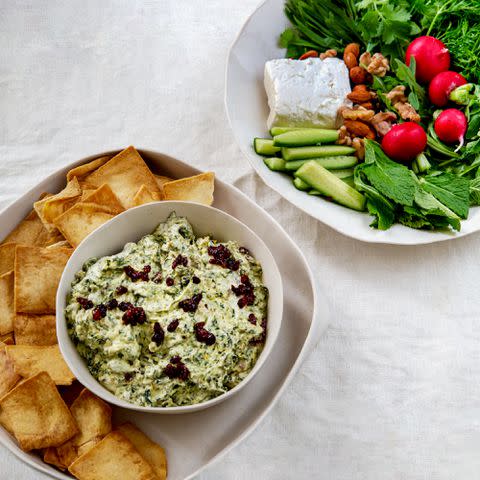
Ellen Silverman
Borani combines vegetables (often spinach or chard) with yogurt to create a creamy and savory dip or side dish widely found in Iranian, Persian, and Turkish cuisines. This borani is particularly inspired by spinach dip, with its thick texture and verdant, spinach-forward flavor. Tart and tangy candied barberries (also made to garnish the Kuku Sabzi) top the dip to balance the yogurt’s richness.
Golab Gimlet
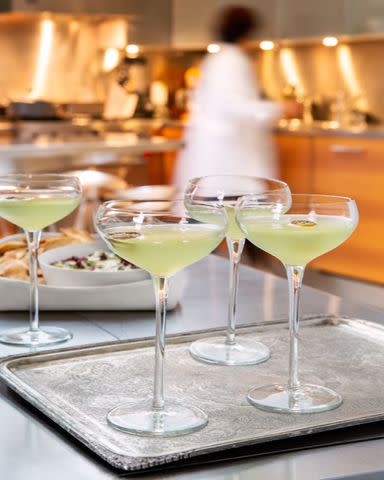
Ellen Silverman
Light and refreshing, this subtly floral riff on a gimlet combines lime, a touch of rosewater, and fresh tarragon for anise-like flavor.
For more Food & Wine news, make sure to sign up for our newsletter!
Read the original article on Food & Wine.

